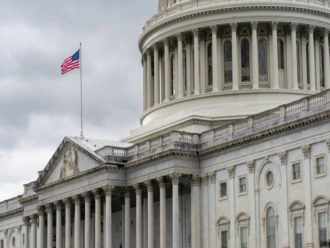The Bank of England has raised interest rates to 3%, its sharpest hike in 33 years. Institutional investors may be sheltered from the short-term impact, but the risk of recession remains a challenge.
Andrew Bailey, governor of the Bank of England, confirmed that interest rates would be raised by 75 basis points to bring borrowing costs to levels not seen since the 2008 crisis, while suggesting that rates would not increase by much further, given the challenging macro-economic outlook.
Much has happened since the last Monetary Policy Committee (MPC) meeting on 22 September in Threadneedle Street. The UK has changed not just a chancellor, but also its prime minister. A brief experiment with free market economics in the form of the mini budget sent gilt yields flying and sparked a liquidity crisis for final salary schemes in the UK. But most of the policy measures announced in the mini budget have now been reversed by incumbent chancellor Jeremy Hunt.
Yet the nine-person monetary policy committee still had to tread a fine line. It was under pressure to act, because UK inflation hit 10.1% in September while the US Federal Reserve and the European Central Bank have announced sharp rate hikes to tackle inflation.
But the Bank of England’s decision comes ahead of the new government confirming the exact scope of its new economic strategy, which will be released on 17 November. Bailey has in the past indicated that a more expansionary strategy would be met with sharper rate hikes, while attempts to cut government spending could result in a slower lifting of interest rates.
Sterling slide
Currency investors have bet against the sterling ahead the rate hike, with the pound falling to 1.13 against the dollar amid rising expectations that the UK economy is set to decline faster than other developed markets.
But for most institutional investors, the effect of these swings in currency values would have been negligible as most DB schemes are either invested in UK-denominated assets or have hedged their currency risks. Schemes that are invested in dollar-denominated assets might even benefit from a strong US currency.
But the macro-economic challenge remains that a weaker sterling adds to further inflationary pressures, as Shweta Singh, senior economist at Cardano, acknowledges. “Markets are pricing in a terminal rate of 480bps by September 2023, which is 100bps lower than during early October, but is pretty punchy nonetheless,” he said. “If the BoE fails to follow through on these expectations, Sterling might come under renewed pressure, which will in turn add to already significant inflationary pressures.”
Impact on gilt markets
The big question on investors’ minds was whether a dramatic central bank move might affect gilt markets. Coinciding with the MPC announcement, the Bank of England has also embarked on the first round of gilt sales, it intends to sell around £80bn in bonds throughout next year, focussing on shorter-dated debt to prevent further pressure on the pensions industry.
At the time of writing, yields on long-dated gilts remained stable below 4%. A repeat of the gilt crisis seen in September was now less likely but could still not be ruled out, warns Cardano’s Singh.
Singh added that a repeat of the heightened gilt market volatility of late-September/early-October seems less likely now given the hawkish tone of the government, but it cannot be ruled out. “Pension schemes should ensure that the lessons learned from wargaming their cash waterfalls and liquidity profiles and, from working with their LDI managers during that period, remain front of mind,” he said.
For Anthony O’Brien, head of market strategy at Phoenix Group, the risks of gilt market volatility remain elevated. “With unemployment at a 50-year low, strong wage growth and inflation at a 40 year high, there are clear concerns about the exceptionally high near-term inflation and the risks of stronger second-round effects”. He argues that hedging strategies remain vital to tackle bond market volatility.
Stocks sliding
The rise in borrowing costs has been tangible across equity markets. While the FTSE100 opened in the red this morning, it jumped in the aftermath of the announcement, suggesting that some investors had priced in a higher rate hike. Nevertheless, the longer-term picture remains unsettling. UK funds reported £7.6bn in outflows, according to Investment Association (AI) data.
Equity funds were hardest hit, reporting £5bn in outflows in September alone, according to the IA. This is likely to add further pressure on defined contribution schemes to diversify their portfolios away from index-based growth strategies.
Property pains
But the pain will perhaps be most severe in property markets, with more than a third of UK mortgage owners due to refinance next year. As a result, analysts by Nationwide Building Society predict that the UK residential property prices could fall by up to 30%.
The effects for institutional investors are far from straightforward as higher borrowing costs make lending money against real estate more attractive. Investors could also identify falling property prices as an opportunity to buy, predicts Doug Clark, head of research and solutions at the BT Pension Scheme (BTPS).
How high can they go?
Despite the bearish outlook, analysts seem to agree that rates are unlikely to increase at the current pace, given the uncertain market outlook. While the MPC sees interest rates as the key weapon to tackle inflation, it believes that price levels will come down sharply next year, falling back below the 2% target in two years’ time, the MPC predicts.





Comments